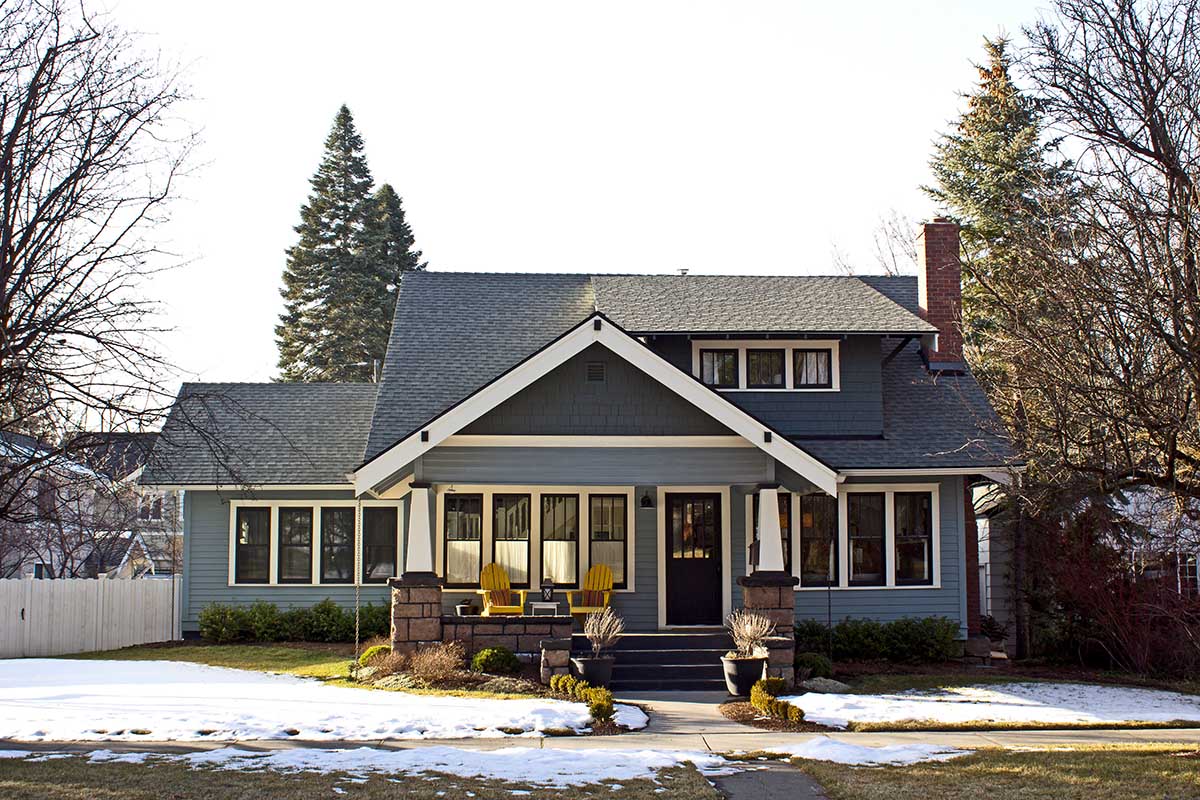Diverting Water Away from Foundation

As a Royal Oak homeowner, not much is scarier than hearing you have a water issue. The first thing that comes to mind is the foundation. When you discover a water drainage issue, don’t go to the dark side just yet.
The good news is there are a number of ways you can lower the impact water can have on your home by redirecting its path. Here’s how.
Clean Your Gutters
This task is both simple and free. Start by cleaning near the downspout, then climb a sturdy ladder to inspect and clean the gutters along the edge of the roof. Reach into the gutter and pull out any leaves, twigs and other debris that may cause clogging. Use a trowel to get anything that is difficult to reach or grasp.
After you pull out all of the gunk, flush the gutter. If the water flows through the gutter just fine but isn’t coming out the other end, you may have a blockage in the downspout. In that case, you may have to detach the downspout to work on it further.
It is best to clean your gutters at least twice a year – when you prepare for the start of summer and as you complete your fall cleaning.
Extend Your Downspouts
It is recommended that downspouts are extended at least 6 feet away from the home to divert the path of water away from the foundation. If your downspout ends less than 6 feet from your home, add an extender. These devices easily attach to your existing downspout and typically cost less than $10.
You can find them at your local hardware store or online.
Create A Rain Garden
A rain garden helps collect runoff, slows it down and helps it filter into the ground. The garden consists of mulch, multiple layers of soil and plants that can tolerate wet environments.
The garden should be the end destination of the water, so create one at least 10 feet from the home and make sure the yard slopes toward it.
Install A Rain Barrel
If you are unable to extend your downspout due to its location, a rain barrel could be another option. Instead of the water dumping onto the driveway or ground, it would dump into a rain barrel. The barrel would store the water until you can get rid of it, usually by reusing it to water your lawn.
This is especially helpful in reducing your water usage and lowering your water bill. While many people store their rain barrels beneath their downspouts, you can also place the barrel anywhere water collects from overhead sources.
If you decide to install a rain barrel on your property, make sure you place it on a flat surface that can hold the weight of a full barrel. You’ll also want to get a rainwater diverter, which keeps mosquitos out and prevents debris from flowing into the barrel.
Seal The Driveway
If your driveway butts up to the side of your house, you can prevent water from getting into the space between the structure and pavement by creating a seal. The first step is removing as much debris from the space as possible. You can do this with a leaf blower or high-powered vacuum. Once cleaned, fill the crack with landscape foam. The foam will expand to fit the space and provide a seal between the pavement and wall.
Since the foam expands, you may have to use a utility knife to cut across excess to make it level. Once the foam is level with the driveway, you’ll want to smooth tar caulk over it to create a flexible, waterproof seal.
Install A French Drain
A French drain collects water below the surface and transports it away from the home. Putting one in your yard involves digging a trench about 2 feet deep then lining it with water-permeable landscape fabric. Once the fabric is laid, add a few inches of gravel and lay down a drainpipe that is punctured with several holes.
Once the pipe is laid, you’ll add more gravel on top, then add sod over it. While it sounds easy enough, it can be pretty labor intensive and will require you to rip up part of your lawn. You may want to consider hiring a professional.
Improve The Grading
Negative grading often occurs due to poor design, soil displacement or structural settling. Whatever the reason, you can fix the issue by re-grading your yard.
If you only have a few problem areas, you may be able to get away with only fixing those spots. If you have major drainage issues or sloping problems in the majority of the yard, you may have to tear up your entire yard and start from scratch.
Either project will involve examining your yard, determining the degree of the slope, digging up parts of your yard and adding, removing or moving soil. Then, you’ll need to rake and till the ground before adding new sod. The scope of work will depend on how much of your yard you’ll need to regrade and how good you are at landscaping.
Just like a French drain, this project requires a good amount of physical labor and is better left to professionals. As you work, you may want to consider also installing a French drain since your yard will be ripped up anyway. This will provide double-duty drainage.
Install A Sump Pump
A sump pump helps remove water from under your home’s foundation by collecting it in a sump basin (located under your house) and pumping it away from your home through a discharge pipe. You can pay to have a sump pump installed in your home, but be aware that this will require breaking through your basement floor and installing a pipe through your wall.
While some of these actions require little work and money, other bigger projects will require you spend some cash and hire a professional. If the drainage issue is a newer problem or you don’t notice any structural damage to the home, try the inexpensive options first.
However, if the issue has been going on for some time, you’ve exhausted the other options, or you notice damage to the home, call in the professionals to inspect the home and provide the best solutions and pricing specific to your problem.

